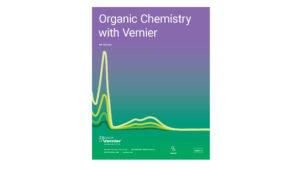Using a Gas Chromatograph: Identifying an Unknown Compound
Experiment #26 from Organic Chemistry with Vernier
- Education Level
- College
Introduction
There are many different types of chromatography: paper, thin layer (TLC), liquid (LC), high-pressure liquid (HPLC), and gas (GC). Chromatography is applied in many fields. Biochemists use liquid chromatography to separate proteins; chemists use GC, TLC, and HPLC to identify organic compounds. Forensic scientists and other specialties use gas chromatography for drug tests, toxin screens, and environmental analysis.
All types of chromatography use the same principles that include a stationary phase and a mobile phase. The stationary phase is immobile on the column or the plate and the mobile phase travels from a start point to an end point. Compounds travel from the start to the end at a specific rate depending on their competing affinity for the mobile gas/liquid phase versus the stationary solid phase. Compounds adhere to the stationary phase through dipole interactions, dispersion forces, or ionic interactions.
Objectives
In this experiment, you will
- Measure and analyze the retention time of each of six substances as they pass through a Vernier Mini GC.
- Measure and analyze the retention time of an unknown mixture of the substances.
- Identify the substances present in the unknown mixture based on retention times.
Sensors and Equipment
This experiment features the following sensors and equipment. Additional equipment may be required.
Ready to Experiment?
Ask an Expert
Get answers to your questions about how to teach this experiment with our support team.
- Call toll-free: 888-837-6437
- Chat with Us
- Email support@vernier.com
Purchase the Lab Book
This experiment is #26 of Organic Chemistry with Vernier. The experiment in the book includes student instructions as well as instructor information for set up, helpful hints, and sample graphs and data.


